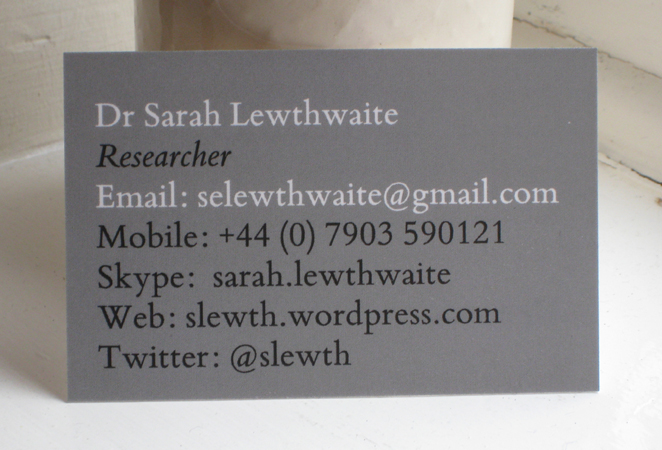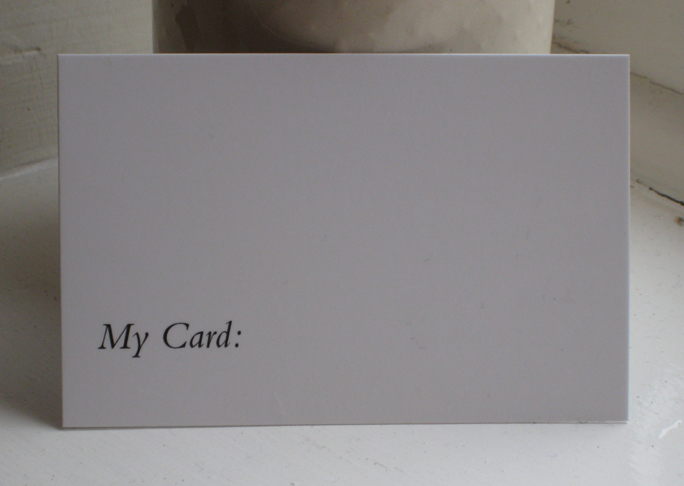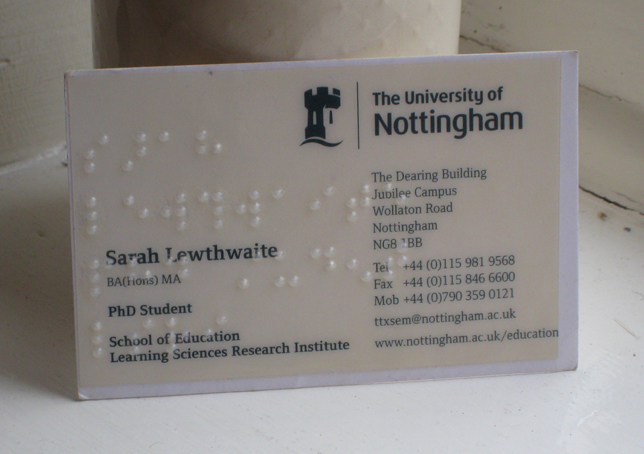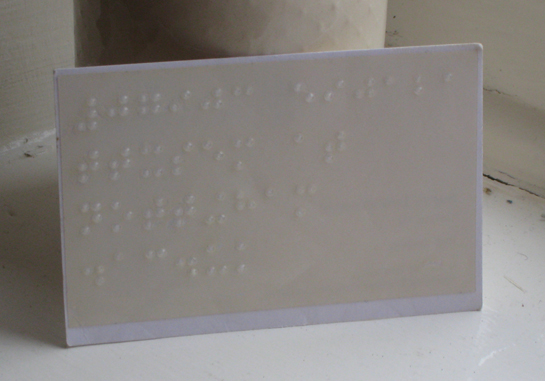Feel Good (Braille) Business Cards on a Budget
I recently ordered a new set of business cards to match my new prefix (Dr) and new email address. Previously I’ve relied on institutional business cards – however, as I’m now freelance, significant decisions have had to be made regarding content, design, usability and accessibility. Cost and convenience have also been important. As with all such things, time was short as I noticed several impending events careering towards me; (see my Twitter account @slewth for forthcoming tweets from the a11yLDN unConference on Weds 21st Sept 2011).
The need for speed led me to moo.com. Moo supply a huge range of designed templates, with options for those wanting to make their own. They print to both Premium and high quality Green standards. They can rush a print job and supply a sprint delivery also.
I chose the Less is More design by Jonathan Howells on several grounds: it uses a large, legible font, the contrast is reasonable and, importantly, there’s plenty of analogue hack space on the reverse. The cards arrived today – so I’m halfway there.


As committed readers will know, I also want braille for my business cards. My previous investigations in this area have led me to Azzabat, who have supplied me with transparent braille stickers that can be applied over a standard business card (or anything else). Azzabat frankly rock the opposition.


There are no set up fees, customer service is excellent and I recommend them highly, especially for institutions and other organisations. Importantly, as their labels are clear, they can be stuck to both sides of a business card (as pictured) – this is vital given the large (36 size) font necessary for braille – as it allows more space for contact information to be represented. Azzabat have a minimum order of 100 units with labels retailing at £0.85 ($1.33) per unit. This is well below other equivalent brailling services for business cards, but on this occassion I needed a cheaper option.
As a result, I’m taking a D.I.Y. approach. With a view to creating my own (opaque) labels for the reverse of my new cards. I’ve just ordered the RNIB‘s Braille King Pocket Frame. This is a small device that allows the user to create braille. The demonstration video below shows how it is used.
http://www.youtube.com/watch?v=1gOr2GsI5C4
The Braille King Pocket Frame retails at £14.39 ($22.5). I’m really looking forward to trying this out. I’ll post the results back to this blog when the device arrives. Comments, as always, are welcome.
3 comments